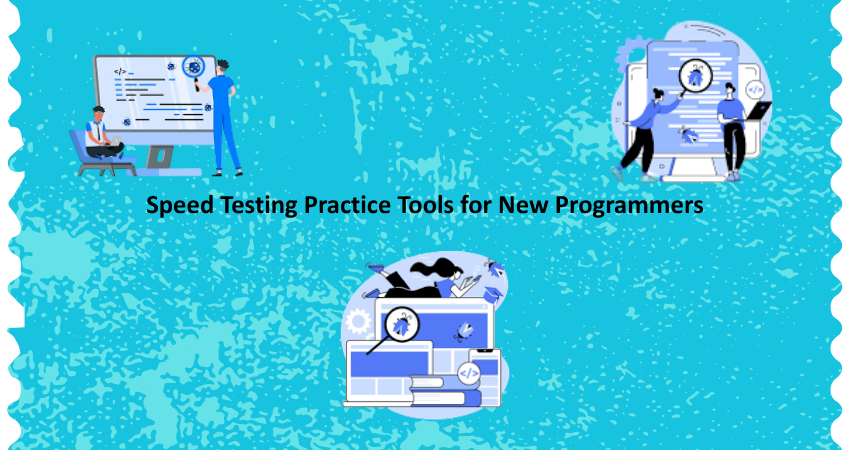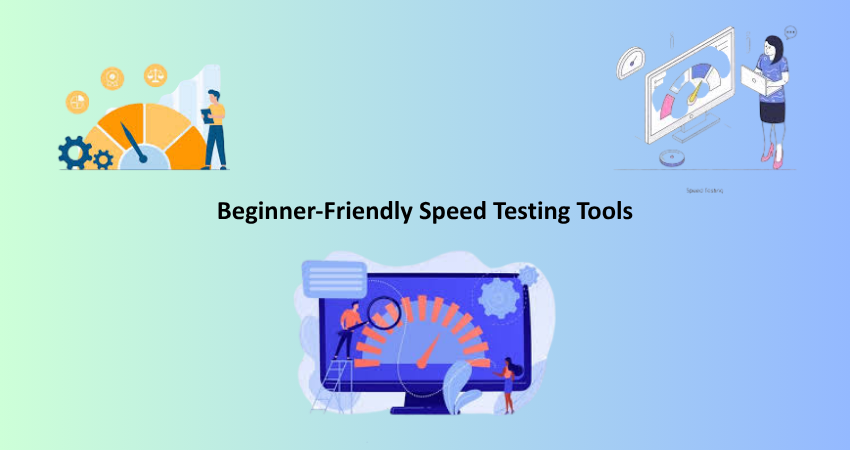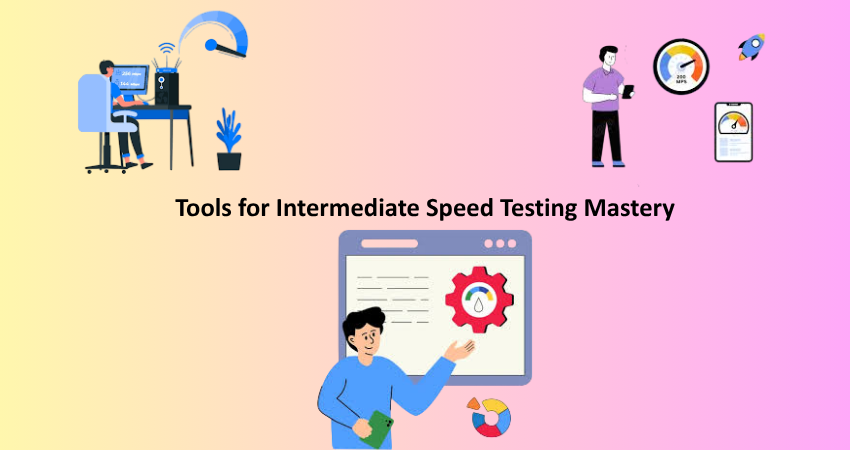
Introduction
An individual would be speedily upaded in terms of programming as well as adequately versed in logic and accuracy. Clarity and solving of syntax and problem specifications form the core of a powerful programmer. Learning to measure and improve code execution time has equal relevance, especially in the context of the enlarging workload an application assumes, making scoping and performance bear the difference between user satisfaction. New programmers, coming into software development, will find exposure to speed testing early in their careers as critical in bringing a performance mind-set towards making cleaner, faster, and more efficient code rather than just code that works.
Speed testing is the process of testing the performance of how long it takes the code or program to run under different conditions. It can be testing for anything from a simple algorithm to an entire application. To understand how fast codes can be executed and where the bottlenecks occur, know that this kind of testing is going to help improve performance for codes. What’s more, it helps really teach developers how to think critically about time complexity, resource consumption, and optimization strategies. For those new programmers trying to examine and refine the speed of their code, learn to interpret benchmark results, and adopt performance-oriented practices from way back, this article is a guide to the best tools and practices for speed testing.
Understanding Speed Testing in Programming
What is Speed Testing and Why It Matters
Code execution speed is measured and analyzed in speed testing. It conveys how rapidly a particular function, script, or application runs and identifies any area of sluggishness. For novice programmers, speed testing might seem advanced initially, but the sooner you learn about it, the better; it teaches you that not all code that works is efficient. You might have solved problems in more than one way; some of those ways would have been faster and more resource-efficient than others. As you learn to test and compare different approaches, you will find yourself optimizing your code, writing better loops, selecting efficient data structures, and avoiding unnecessary computations.
The other aspect of speed testing is the conceptualization of algorithmic thinking. In a programming competition, interview, or practical engineering, performance matters greatly. If you can test an algorithm for execution time, you can, for example, reject a brute-force solution in favor of a more optimized one that uses binary search or memoization. It gives you practical experience in applying Big O analysis—how an O(n) solution could win against an O(n²) solution as the dataset increases. Running speed tests early on will instill confidence in the assumption of your code being able to scale. More importantly than that, you learn to think in terms of assessing not just if your code does the job, but how well it does and where further improvements can be made to help with its performance.
Common Metrics Used in Speed Testing
Understand what you are measuring: speed tests commonly use execution time, the most common measurement for which is in milliseconds (ms) or microseconds (μs). Even in the case of the block of code, this shows how long it takes to complete from beginning to end. Execution time is also affected by many factors, including the hardware that you are using, system load, or background processes; therefore, one should repeat tests multiple times and calculate averages. Another common practice is to isolate functions or algorithms so that only the offending section of code can be measured while other unrelated operations are cut out for “noise.”
Other useful metrics are memory consumption, CPU usage and throughput. Memory consumption tells how much RAM is used by the program. However, for CPU time, it indicates the time processor worked, ignoring the time that the process had to itself in case I/O operations were involved. Throughput is a measure of the number of operations that can be performed in a specified period, and it is commonly regarded in regard to network or database applications. For beginners, it is however nice concentrating on the execution time for starters, but it is nice later on to understand these other metrics too. They give a fuller picture of your code’s performance and identify further bottlenecks within it. Get to know these concepts early, as they will help you lay the foundation to writing production-ready software down the road.
Beginner-Friendly Speed Testing Tools

Built-in Timing Functions in Programming Languages
Most of the new programming languages have built-in measures for execution time. These are very helpful for beginners since they do not require any installations or setups with third-party tools. You may use the time module in Python to check how long a particular block of code takes to execute. This is done by capturing the time before and after the execution of a function, and the result gives a basic speed test, a rudimentary form of speed test. In Python, it also offers a timeit that is a more sophisticated module aimed at negating the of having test repetitions to average out the results executed time. In JavaScript, console.time() and console.timeEnd() provide a relatively easy and effective way to measure timings whether in the browser or Node.js.
The System.nanoTime() or System.currentTimeMillis() methods in Java provide good facilities for taking accurate measurements during performance testing. C++ has similar solutions in <chrono>, while time.Now() provides timestamp capabilities in Go. These tools, provided by each language, can do a great job of measuring code performance without having the programmer learn an additional piece of software. They also help reaffirm the basics of programming: loop optimization, recursion efficiency, and algorithm comparisons—how small logical changes change execution time in dramatic ways. New programmers working with small projects using these tools will progressively start incorporating measuring performance into their coding habit.
Online Coding Platforms with Speed Feedback
Also, apart from language-specific tools, online coding platforms provide a very convenient environment along with an entry point to learn speed testing. The coding websites such as LeetCode, HackerRank, Codeforces, and CodeSignal permit a user to submit the code and instantly check feedback for their execution time and memory consumption. This therefore gives the chance to comprehend the performance of a code with respect to different input sizes. Plus, one can use this to benchmark the solution against others to understand better how well different approaches perform and ultimately revise into better solutions.
In competitive programming, both correctness and efficiency are emphasized in the challenges put forth by these platforms. When solving these problems, the beginners not only learn to make their code work; they learn to make it fast. Timed problems make you think of algorithmic complexity. Gradually, this builds an environment for you to write high-performance code for scaling. One other boon is that you can also find reasoning case-type test cases that simulate real-life scenarios that handle large arrays, edge cases, and really high input volumes. For beginners, timed contests and daily challenges offer an excellent platform for speed testing-they can do so in an entertaining game-like fashion. As your skills advance, you shall naturally start putting in codes that offer both correctness and efficiency.
Integrating Speed Testing into Learning Workflows
Practice Projects That Benefit from Speed Evaluation
In order to predispose someone to speed tests, one of the best approaches is to add the speed tests into actual or simulated projects. Initial practice could be done with simple projects like sorting algorithms, file processing tools, or API request handlers. Write different implementations of the same algorithm—bubble sort, merge sort, quick sort—and gather execution time on these on large datasets to see how much time is spent actually using the algorithms. Doing this will bring out the practical real-world difference really made by a particular choice of algorithm and give you a mental model for performance tuning. Similar to this process, while building a text parser or web scraper, you would also measure the time consumed to process a file of different sizes or page loads.
These practical projects present a clear view as to how performance scales with data volumes, and how the architectural decisions affect execution time. For example, when handling large CSV files, you will learn buffering read operations are significantly better than line-by-line parsing. The opposite will hold true for the processing of images or video, where using efficient libraries such as OpenCV or NumPy greatly reduces the overall processing time. Adding speed tests to your projects will also foster coding discipline; you will learn to think before you code, optimize before you deploy, and check that your optimizations indeed made a difference. When built up early in your programming career, this will be an extraordinarily valuable quality to have.
Incorporating Speed Testing into Daily Coding Practice
Associating speed testing with your programming practice is important for mastering it. What this will translate into is measuring execution time for practically every function you write, problem you solve, or tiny module that you build. Do not treat performance assessment as a launchpad that you touch on sometime at the end of a project; treat it as an integral part from the beginning. Timing your first draft is soon followed by refactoring and timing the new version. This consistent drilling forms an intuitive sensation about performance practices: Nested loops? Being hammered in your code; repeated database calls? Being totally vetoed in your next choice of projects.
You may maintain a journal of practices, which is a simple document where benchmarks, optimizations, and learning from the various exercises are recorded. This diary will eventually turn into a reference to help you recall which methods resulted in better speed and why. You might also try setting daily or weekly speed-testing targets to help speed up your learning process. For example, try to solve five problems within which you would reduce execution time by at least thirty percent or refrain from testing and comparing three other different approaches to the same action with benchmarks. As you evolve, you look into deeper performance factors-for example, garbage collections in Java; asynchronous execution in JavaScript; or multithreading in Python. They will transform you from a basic coder into a thoughtful, performance-oriented programmer if followed.
Tools for Intermediate Speed Testing Mastery

Using Profilers and Debuggers to Analyze Performance
As the beginner programmers get into intermediate landscapes, it becomes important for them to use profilers along with debuggers to go further into performance analysis. Profilers are basically tools that will give a clear insight into how your code is being executed, how much time every function takes, and where exactly your bottlenecks are occurring. For example, cProfile, line_profiler, and Py-Spy help for viewing the code execution flow to show the portions of your program taking the most time in Python. In Java, there are also some graphical interfaces such as VisualVM and JProfiler to monitor CPU and memory usages, making it easier for one to detect inefficient loops, object creation or memory leaks.
IDEs like IntelliJ IDEA, PyCharm, and Visual Studio Code come with profilers to easily pause execution, inspect variable states, call stacks, and memory allocations. These tools are such a close encounter with performance that they help you tweak each function. Profiling exposes you to concepts about call frequency, garbage collection, memory footprint, and CPU usage patterns, which are all relevant to software design at scale. For the rookie programmer making strides toward intermediate programming, gaining insight into profilers will be a game changer. From gut-feeling optimization, now you are able to drill down and refine based on that data; from guessing what the problems are in terms of performance, to really learning how to fix them with precision and clarity.
Benchmarking Libraries for Reliable Measurement
In contrast to simple scripts, built-in timing functions can be used to test discrete performance. Serious performance benchmarking makes use of benchmarking libraries that provide for more accurate and reproducible results. Such libraries eliminate noise introduced by external factors (e.g., CPU throttling, system processes, background apps) while allowing a code fragment to be executed thousands of times and produce statistically meaningful timing data. The timeit module (with its command-line interface version) is the best-known benchmarking tool for Python. For Java, JMH (Java Microbenchmark Harness) is the gold standard allowing microbenchmarks with complex configurations considering the optimizations performed by the JVM.
JavaScript developers can build this kind of tool using Benchmark.js, which al-lows for the benchmarking of functions and comparisons of alternatives by controlled means. Rust would have Criterion.rs, and Go would have the built-in support for benchmarking via the testing package. Those libraries allow you to refine performance and help in the making of decisions; they also can help in profiling the performance of your codebase over time. The benchmark results can be stored, compared, and even versioned to keep an eye out for regressions. With benchmarking libraries, the newly-minted programmers can now measure accurately, iterate deliberately, and prove performance gains with evidence rather than assumption.
Conclusion
Speed testing is an essential skill for new programmers to make sure their applications function correctly and perform well. For this goal, the resources available are numerous from built-in timing tools to online coding platforms for speed analysis and even advanced profilers. More significantly, speed testing in everyday working practices empowers better designs, smarter algorithms, and longer-term scale and optimization thinking. The speed evaluation done at an early stage would compel the developer to be more of a solver of problems than just a problem solver.
All this adds to a mindset geared for continuous improvement through an understanding of performance metrics, know-how in taking benchmarking tools, and learning through each performance test made. Thus preparing one for technical interviews and the real-world development plus it sets one apart as a performance-conscious coder. At whatever stage of your development, either writing your first script or designing your first application, just remember that fast code is smart code. And the smarter coders test their speed.